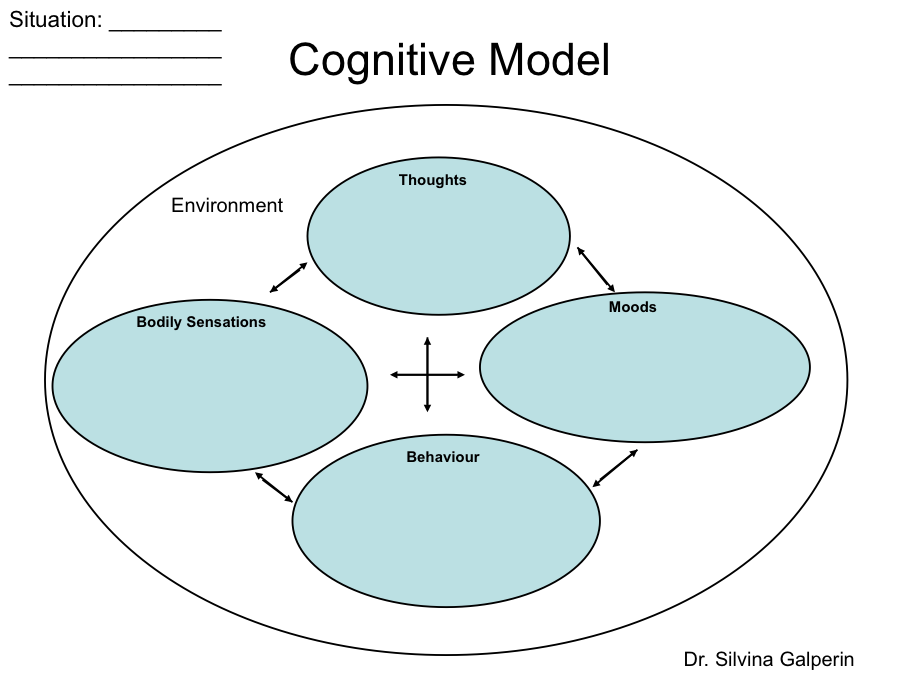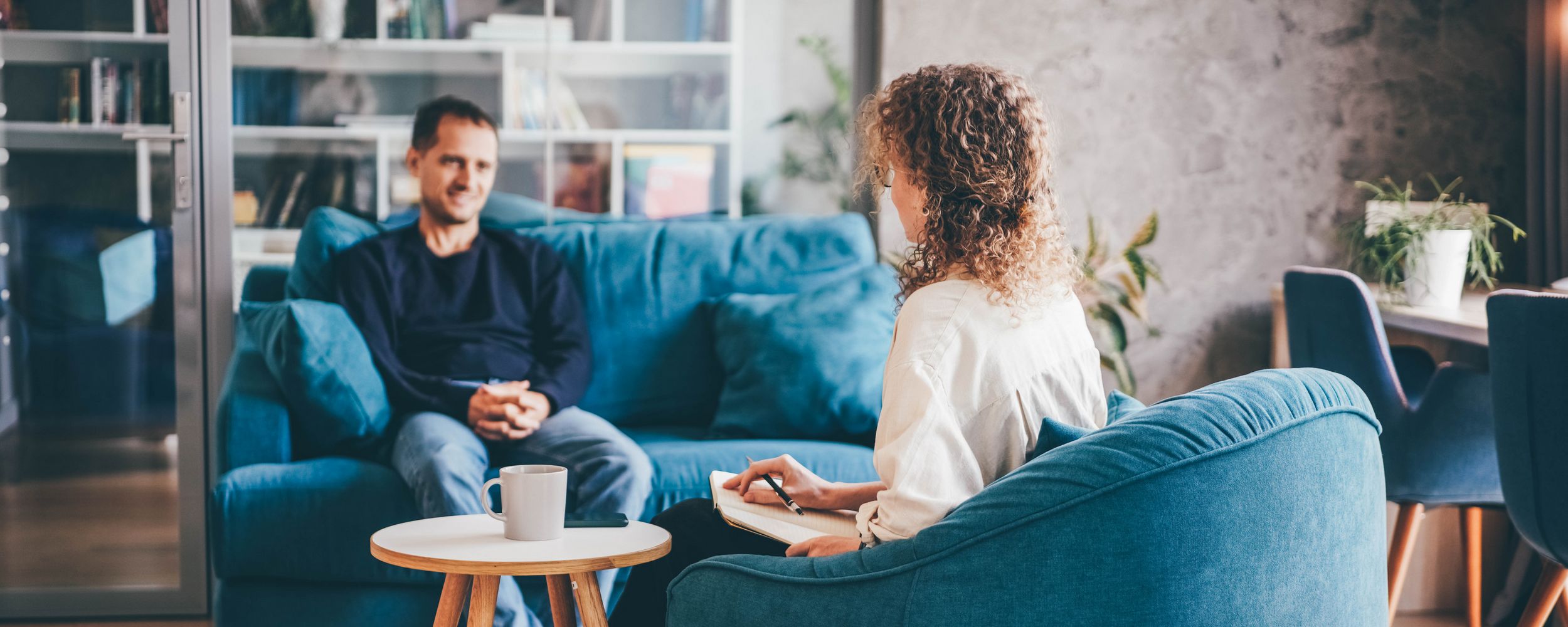What kinds of techniques are used in a CBT treatment?
- All CBT techniques and methods are based on the cognitive model, which considers that our thoughts, emotions, bodily sensations, and behaviours are interconnected and influence each other.

- The techniques are all designed to help clients become aware of and change the different parts of the model (thoughts, physical reactions, behaviours) to change their usual unwanted responses to triggers or belief systems. They are intended to make people realize that they can act in new ways that bring better results to them. These techniques can target the thinking process (cognitive aspect), the behavioural aspect or the physical reactions to situations.
- In Cognitive Behavioural Therapy (CBT), we usually use worksheets to help people appreciate their internal experiences and beliefs and develop experiments accordingly.
- We use logs, diary entries, rating scales, and other worksheets to help clients connect situations with their emotions, thoughts, feelings, and actions. We also support their learning about their own experience and help them see their progress throughout treatment. Click here to see examples of CBT worksheets.
- All these logs and worksheets are integral to a treatment where the therapist offers a warm, compassionate and caring environment so their client can feel safe, validated and supported. The pace at which the techniques are introduced depends on each client’s preference. Some people choose to go at a fast pace and learn everything as soon as possible, while others prioritize taking the time to absorb the new information, internalize it and make the wanted changes in their lives.
What are Cognitive Techniques?
The exercises we use to address difficult and unhelpful thoughts and beliefs include thought records, such as tracking thoughts when there is a shift in the emotional state, identifying emotions, and finding evidence for and against the thought that causes suffering. Clients learn about typical cognitive distortions that happen when we get very emotional (very sad, anxious, angry, or scared). The cognitive techniques are geared towards helping clients identify their negative ways of thinking and use methods to reach a more balanced or realistic thought.
Another technique is Socratic questioning, which involves asking specific questions that allow the client to realize on his own that his original painful belief was not completely true. This brings a huge sense of relief. It allows people to decrease their anxiety and access the part of their brain that is more rational.
Read about anxiety in children.
What are behavioural techniques?
The Behavioural techniques involve taking action to test the beliefs and assumptions causing stress. For example, people afraid of speaking to strangers or in public may develop a series of small steps to go from what they can do now to achieve their desired goal. Before starting to take the steps, they learn various ways to relax, using relaxation techniques, self-talk (reassuring phrases) and affirmations that they have developed during the therapy before getting to this stage.
Conducting behavioural experiments always involves getting out of one’s comfort zone in order to conquer one’s fears. This process opens the doors to discovering new assumptions and meanings that lead to personal growth and development.
Behavioural experiments are designed to challenge negative beliefs that may have been helpful and appropriate in the past, mostly during childhood, but are no longer applicable or helpful now.
See how a child psychologist can help your child.
How can you learn to use these techniques?
You will learn all of these techniques during your sessions. You will be guided to become more aware of your thoughts, emotions and expectations. Then, you will plan to apply what you have learned between sessions and practice it. This will lead to changing your default attitudes and testing new ones.
Challenging the old beliefs guiding your daily actions and decisions and no longer applying them to your present will expand your limiting beliefs and make you grow.
You will drop fears, gain more freedom, and feel alive.
What are the benefits of learning and practicing these techniques?
All of the techniques that you will learn during your CBT treatment will educate you on how you can challenge negative or dysfunctional beliefs, emotional responses and behaviours. This will, in turn, change how you see others and the world in a way that serves you better.
Sometimes, we become caught up in negative thoughts that lead to negative interactions and results. When you learn how to challenge your thoughts in an emotional state of anger, frustration or anxiousness, you can stop yourself before you act upon them.
Read more about anger management.
Practicing these techniques will change your mind by making it more flexible and able to see things from a new and balanced perspective. It will also allow you to be in control of your actions, which builds a sense of accomplishment and self-confidence.
Free 15-Minute Consultation
If you are interested and would like to speak to a CBT specialist in Thornhill, Vaughan, Markham, Richmond Hill or North York, or have any questions, please call 905.597.4404 or fill out the form below for a free-15 15-minute consultation and someone will contact you within 24 business hours.




